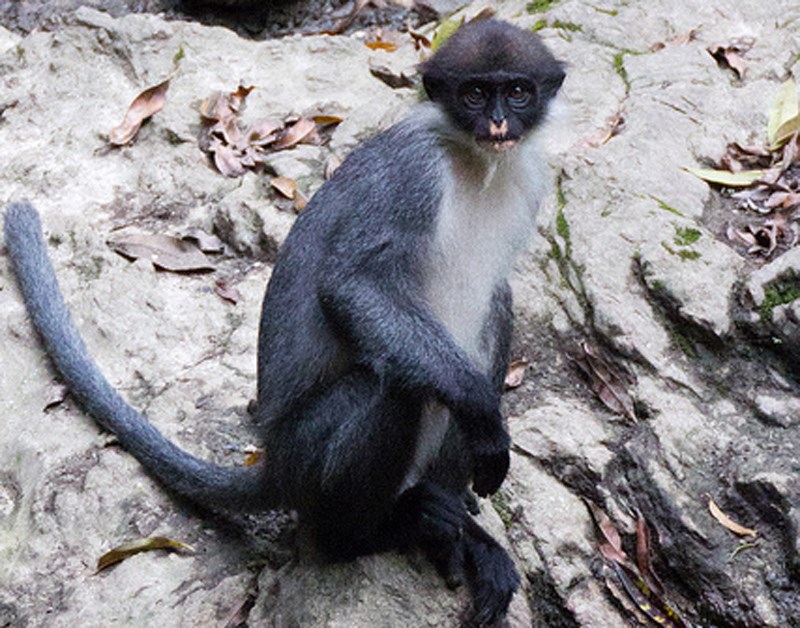A ߣ������resident's attempts to capture images of the elusive Bornean clouded leopard instead led to what Simon Fraser University (SFU) officials are calling the rediscovery of a lifetime.
Brent Loken, who is working with the indigenous Wehea Dayak people in Borneo to fight deforestation and preserve their traditional way of life, was the leader of a research team that set up a camera trap at a mineral lick hoping to capture images of the rare cat.
But last June, while reviewing images taken by the still camera equipped with a motion sensor in the Wehea Forest in East Kalimantan, in the Indonesian portion of the island of Borneo, Loken and his fellow researchers were stunned to see an animal they didn't recognize.
It turned out to be a Miller's grizzled langur, which SFU officials described as one of the rarest and least-known primates on the island of Borneo, and also a species many suggested was extinct or on the verge of extinction.
It was a challenge to confirm our finding as there are so few pictures of this monkey available for study, Loken, a PhD student in SFU's resource and environmental management program, said in a statement issued on Friday (Jan. 20). The only description of Miller's grizzled langur came from museum specimens. Our photographs from Wehea are some of the only pictures that we have of this monkey.
Loken's work is featured in a paper published last week in the American Journal of Primatology, SFU officials said.
Loken, who has owned a home in ߣ������since 2004 and began living in it with his wife Sheryl Gruber when he launched his doctoral studies, is a former school principal with a background in conservation biology who spends six months each year in Borneo. He and Gruber also run Ethical Expeditions, a non-profit organization that aims to help the Wehea Dayak fight back against the deforestation that threatens their traditional way of life.
Loken, whose PhD work is focused on the presence of the clouded leopard in the region, told The Chief on Monday (Jan. 23) that the discovery of a rare primate is another reason to continue working to preserve its habitat in the face of pressure to establish developments mostly palm kernel oil plantations and the like that further economic development in the region.
In some ways, though, he said trying to preserve rare species, as well as indigenous peoples' way of life, is a race against time.
Like this monkey it inhabits such a small area that any one project could go ahead and you could see this monkey slip into extinction, he said. There's truly a struggle going on between economic development and preservation of the natural assets and people's traditional way of life.
You get into the complexities of, 'What kind of value does something like this monkey bring'? That's one of the questions that we're trying to wrestle with, and what policies do you put in place to help protect the monkey? Can you have parallel paths of economic development and also conservation?
Loken, who is headed back to Borneo on Feb. 19, said he's happy to share the credit for the discovery of the Miller's grizzled langur, but that it's really the Wehea Dayak who made it possible. He said the community approached him with the idea of documenting the region's biodiversity to help strengthen the case for legislated protection of the Wehea Forest.
We could not do this work without the local community's support, Loken said. It's great for me and I'm so happy that I was able to lead the team that made this discovery, but it's the local people whose support really made this happen.




